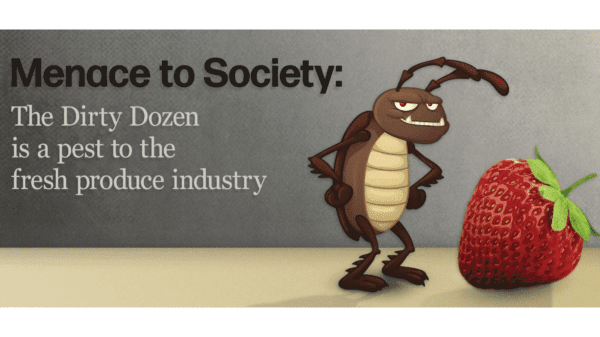Behind the Dirty Dozen pesticide residue discussion is a much larger issue of risk- versus hazard-based assessments of food safety.
The Environmental Working Group’s claims seem closer to hazard-based assessments, which are more commonly used in European nations than in the United States. Produce industry claims are closer to risk-based assessments, which are more often used by regulatory agencies in this country.
Hazard-based assessments are comparatively simple: all you have to do is find a detectable quantity of a harmful material in a product.
One scientific paper in Trends in Food Science & Technology puts it this way: “In hazard-based approaches, simply the presence of a potentially harmful agent at a detectable level in food is used as a basis for legislation and/or risk management action.”
Risk-based approaches, on the other hand, view the hazard in a broader context, trying to “establish health-based acceptable or tolerable daily intakes,” as the EPA puts it on its webpage on risk assessments.
Both processes begin by establishing the presence of a hazard.
Risk-based assessments, however, view the actual danger in a fuller context, such as exposure levels and in some cases the actual presence of the material in humans. The article cites “increasing evidence that direct measurements (biomonitoring) in humans usually demonstrate much lower exposures than those derived from exposure estimates.”
Another important difference: “Risk-based approaches to food safety will always carry a certain degree of uncertainty, both in relation to the toxicological data and the exposure estimates,” the scientific article notes.
The problem with risk-based assessments, then, is the inevitable uncertainties. The problem with hazard-based assessments is that they focus on the mere presence of the toxic agent, often overestimating the actual danger.
Benchmark Levels
How high can pesticide levels be before they cause health problems?
To go further into this issue, we have to start with one uncontested fact: the overwhelming majority of fruits and vegetables sold in the United States have pesticide residues well below benchmark levels set by the EPA.
Christine Rosenbloom, nutrition professor emerita at Georgia State University, points out, “The USDA Agricultural Marketing Service conducts yearly testing of pesticide residues on foods. Findings show that greater than 99 percent of the produce tested through the Pesticide Data Program had residues below EPA tolerances.”
This an excerpt from the cover story in the May/June 2022 issue of Produce Blueprints Magazine. Click here to read the whole issue.



